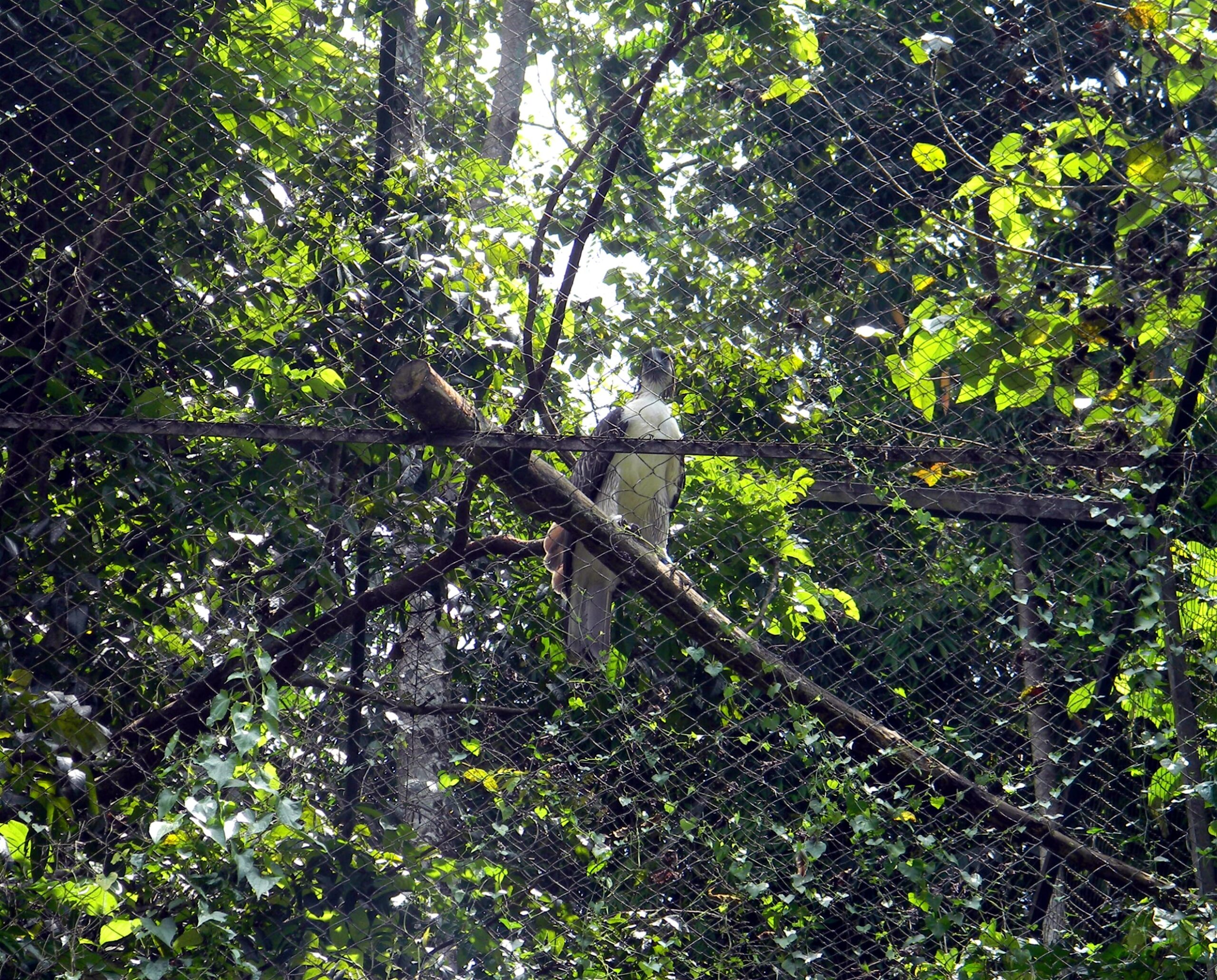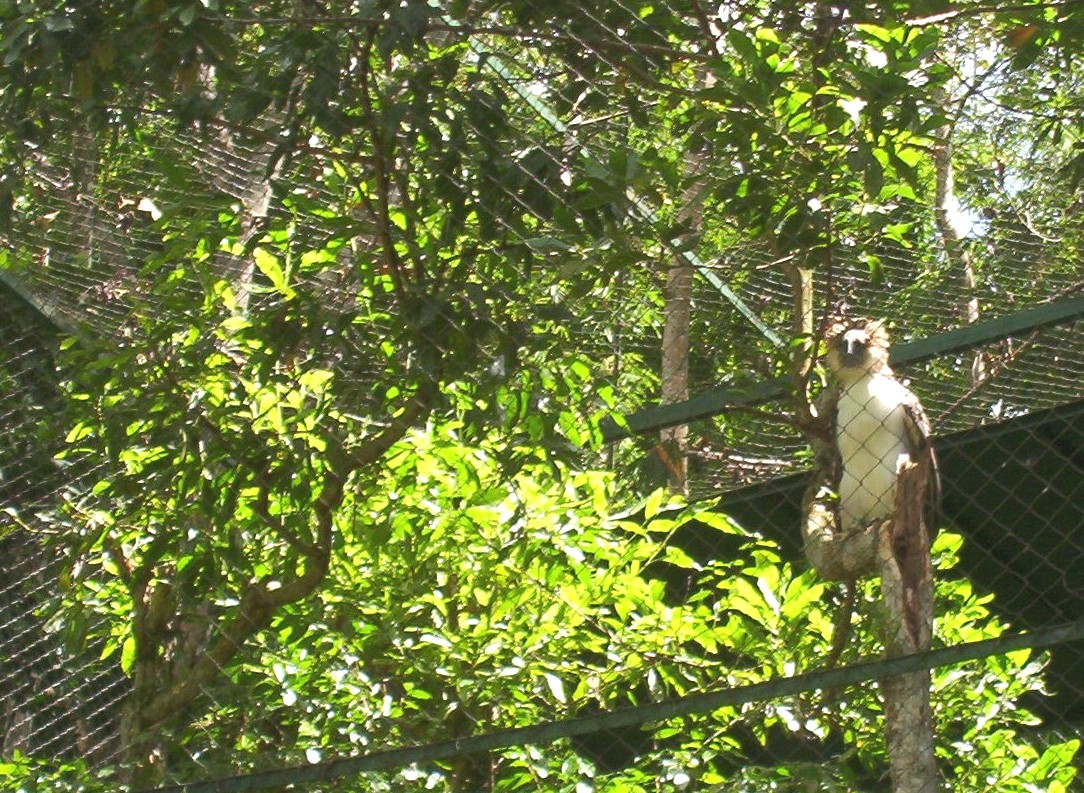Text and Photos by Henrylito D. Tacio
Since the Mounts Makabol-Alikoson Conservation Area (MMACA) in Davao City is a nesting site of the endangered Philippine eagle, several environmental groups and community members of barangay Salaysay are campaigning for the declaration of the area as a critical habitat.
“The forests of the MMACA have been recorded as a nesting territory of a Philippine eagle since 1986,” said Rowell L. Taraya and Jaycson C. Ibañez of the Malagos-based Philippine Eagle Foundation (PEF).
Aside from PEF, the other green organizations batting for the MMACA to be proclaimed a critical habitat are Interfacing Development Interventions for Sustainability (IDIS), Sustainable Davao Movement, Ecoteneo, and Bantay Bukid.
During a recent press conference, a research team – who spent a total of 7,200 minutes or 120 hours searching and observing the national bird in the area – reported that they found an eagle pair, a six-month-old eagle, and a new eagle nest.
“The eagles were active within a 500-meter radius of the nest tree at Mount Makabol, specifically at the Panukuan area where a nest was located,” the team reported. “The nesting site on the balete tree is surrounded by three hamlets (sitios).”
The pair of Philippine eagles were frequently detected on six occasions. “This is only 4.5% of the total observation hours allotted during the expedition, which means these are not dwellers but permanent residents in the area,” the team said.
“Apart from the Philippine eagle, there are other threatened endangered species that are about to be extinct and need to be protected,” said Ibañez, who is PEF’s research and conservation director.
Another study, conducted by a team of researchers from the University of the Philippines-Mindanao (UP-Min), recorded 119 terrestrial vertebrate species: 88 birds, 16 amphibians, six reptiles, five bats, and four non-volant mammals. Of this total, 39 species are considered endemic in the country, and 23 of them can be found only in Mindanao.
The majority of the species found at MMACA are considered endangered and threatened. If they are left unprotected, they may become extinct. Their status are indicators that conform with the guidelines in declaring a place to be a critical habitat.
Critical habitat is the specific areas within the geographic area occupied by the species at the time it was listed that contain the physical or biological features that are essential to the conservation of endangered and threatened species and that may need special management or protection.
“We will turn over these results and formally propose to declare Mt. Makabol-Alikoson as a critical habitat to the Watershed Management Council and government authorities, especially (the regional office of the Department of Environment and Natural Resources) by the end of the year,” said Atty. Mark Peñalver, IDIS executive director. “We need the support of the public.”
Meanwhile, the PEF wants to transfer the Philippine Eagle Center (PEC) to the 105-hectare Eden Tourism Reservation Area (ETRA) at the foot of Mount Apo. Currently, the PEC is located in Malagos, Calinan, some 30 kilometers northwest of downtown Davao. Here, several eagles are being induced to breed in captivity.
“Our proposed site for the Philippine eagle conservation breeding sanctuary is 24 hectares, with only 8 hectares as the core facility while the rest are a natural forest buffer zone,” the PEF said in a statement.
ETRA, located in barangay Eden in Toril District, was awarded to the Davao City government through Presidential Proclamation Number 239, series of 1951.
On what makes ETRA viable for Philippine eagle conservation, PEF cites the following conditions: (1) the proposed site is within the range of optimal Philippine eagle nesting habitats in the wild; (2) it has altitude of 1,000 to 1,200 meters above sea level; (3) the forested area is at the foot of Mount Apo; and (4) effective against bird flu and other ambient threats and disturbances.
Currently, the PEF wants the eagle center to be transferred to proposed site for fear that the eagles might be infected with avian flu. “We fear it will happen if we don’t move our breeding Philippine eagle pairs to a new location,” PEF said.
“Our national bird, despite how fierce it is, cannot protect itself from it,” the foundation pointed out.
If avian flu happened in the past, it will happen again. “It is likely for the avian flu to recur, and when it does, it can potentially wipe out our Philippine eagles in the PEC,” it said. “All it takes is a single case of infection and the only captive breeding population in the world of this already critically endangered species would be completely eradicated.”
Other threats the Philippine eagles are facing at the current PEC include: disturbances from activities in adjacent lots, surrounding game and poultry farms where diseases that infect birds can propagate and develop, and woodland buffer has thinned out.


The Philippine eagle – known in the science world as Phithecophaga jefferyi and described by famed American aviator Charles Lindbergh as “the world’s noblest flier” – was declared by then President Fidel V. Ramos as national bird (thereby dislodging maya as such).
The Philippine eagle is second only to the Madagascar sea eagle in rarity. In size, it beats the American bald eagle; it is the world’s second biggest after the Harpy eagle of Central and South America.
The bird icon was being collected in the country as early as 1703, but it was not until 1896 that it was “discovered” in Samar by the English naturalist John Whitehead, who called it the “Great Philippine eagle.”
Unlike most animals and humans, Philippine eagles are monogamous and bond for life. Once an eagle reaches sexual maturity – at around five years for female and seven years for males – it is bound for life with its mate. They can be seen soaring in pairs in the skies.
PEF Executive Director Dennis Salvador said massive deforestation has turned the Philippine eagle into an endangered species. “Deforestation is terrible,” he deplored. “The Philippine eagle has become a critically endangered species because the loss of the forest has made it lose its natural habitat.”
In the wild, the eagle’s nest is approximately 80 feet above the ground in prominent mountain peaks overlooking a river or stream to give a good view of its territory.
